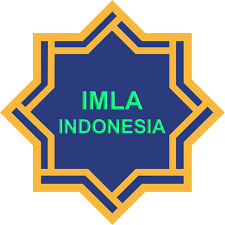Balaghah Ar-Ritsa’ Fii Syair Al-Khanasa’ Min Nihayah Al-Lafdhi Wa Al-Ma’ani
The Rhetoric of Lamentation in Al-Khansa’ Poetry in Terms of Words and Meanings
DOI:
https://doi.org/10.22373/nahdah.v4i1.4052Keywords:
Poetry, Lamentation, Al-Khansa, RhetoricAbstract
ومن شعراء المسلمين والصحابيات والمؤمنات والأمهات الصابرات الخنساء. ترتبط أشعار الخنساء بأهداف الشعر بشكل عام، ومنها الرثاء، وهو الغرض الشعري البارز في الشعر الجاهلي والإسلامي، ويحتل مكانة كبيرة في أشعار معظم الشعراء. فنجد رثاء الأحبة والأصدقاء، ورثاء المدن الهاربة، والبكاء على البلاد البائدة، وغير ذلك من أشكال الرثاء المتنوعة. تعتبر المرثية من الأغراض المهمة المستخدمة في الشعر العربي بشكل عام. ومنهج البحث الذي ينتهجه الباحث في هذا البحث هو المنهج الوصفي التحليلي، أي منهج يحاول تلخيص العلوم اللغوية من الجانب التاريخي والجانب المعياري، ومن تلك التي تدفع الباحث إلى البحث وتريد تحليلها هي خصائص شعر رثاء الخنساء من حيث الألفاظ والمعاني. ومن أهم النتائج التي توصلت إليها الباحثة أن معاني الحزن هي الفكرة الأساسية المسيطرة على شعر الخنساء، كما ترتبط بهذه الفكرة معاني أخرى كالبكاء والحنين. كان شعر الخنساء يعتمد على غرض واحد محدود، وهو رثاء الناس. وتتكرر الكلمات في شعرها للتأكيد على الشعر، وأفكارها تبكي على أخويها (صخر ومعاوية) وتبكي على أخيها صخر.
One of the Muslim poets, companions, believers, and patient mothers is Al-Khansa. Al-Khansa’a’s poems are related to the purposes of poetry in general, and one of them is lamentation, which is the prominent poetry purpose in pre-Islamic and Islamic poetry, and it occupies a significant place in the poems of most poets. We find lamentations for loved ones and friends, lamentation for fleeting cities, crying over defunct countries, and other various forms of lamentation. Elegy is one of the important purposes used in Arabic poetry in general. The research method that the researcher approaches in this research is the descriptive and analytical method, meaning a method that attempts to summarize the linguistic sciences from the historical aspect and the normative aspect, and those that motivate the researcher to research and want to analyze them are the characteristics of the poetry of lamentation for the Khansa’a in terms of words and meanings. One of the most important results that the researcher found is that the meanings of sadness are the main idea controlling Al-Khansa’a’s poetry, and other meanings are related to this idea, such as crying and nostalgia. Al-Khansa’a’s poetry was based on one limited purpose, which was to lament people. The words in her poetry are repeated to emphasize the poetry, and her thoughts are crying for her brothers (Sakhr and Muawiyah) and crying for her brother Sakhr.
References
ابن قتيبة الدينوري، الشعر والشعراء، ed. أحمد محمد شاكر, 1st ed. (القاهرة: دار المعارف, 1958)
ابن قتيبة، الشعر والشعراء، بيروت لبنان: دار الكتب العلمية،1980 م
ابن منظور، لسان العرب، القاهرة: دار الحديث، دم، ج 80، 2003م
أحمد الهاشمى، جواهر الأدب في أدبيات والانشاء لغة العرب، ج.1
أحمد الشايب، أحوال النقد الأدبى، مكتبة النهضة العربية
أحمد مكي، مصادر الادب، دار المعارف ط.5، 1980م
أحمد الإسكندري ومصطفي عناني، الوسيط في الأدب العربي وتاريخه، القاهرة: دار المعارف، 1398ه- 1978م
إبراهيم بن إسماعيل الأبياري، الأغاني، إشراف وتحقيق، القاهرة: دار الشعب، 1389 - 1399 هـ
إبتسام مرهون الصفار، محاضرات في تأريخ النقد عند العرب ثقافة الورد في التراث العربي، إصدارات الشارقة عاصمة الثقافة، 2014.
جريدة الحياة، السبت 6 اغسطس 2005 الموفق 1 رجب 1426ه/العدد 15467الواحة، سبت 1 رجب 1427ه
حمدو طمّاس، ديوان الخنساء، بيروت- لبنان:دار المعرفة، ط.2، 2004م
عبد السلام هارون، المعجم الوسيط، لبنان: المكتبة طهران، ج.3، 1987م
عبد السلام الحوفي (محقق)، ديوان الخنساء، بيروت: دار الكتب العلمية، ط.1 ،1985م
على اليمنى دردر، تاريخ الأدب العربي، د.ط.م: 2،1993م
على عبد الواحد، علم اللغة، (مصر الفجالة: مكتبة نهضة، 1962 م-1382هــــــ)
عمر فروخ، المنهد الجديد فى الأدب العربي، بيروت: دار العلم للملاين،دس، ج. 1
كرم البستاني، تحقيق وشرح كتاب شعر الخنساء، مكتبة صادر، بيروت، 1951م
لويس معلوف، المنجد في اللغة الأعلام، بيروت: دار المشرق، ط.4١
مصطفى الغلايين، "جامع الدروس العربية "، (المكتبة العصرية، بيروت، 2000)
نجم الدين الحاج عبد الصف، الشعر العربي والاتجاهات الجديدة في عصر النهضة الأدبية، نادي الأدب (Makassar، 2018).
Fajri, A., & Zulhelmi, A. (2023). Positives and Negatives of Globalization in The Arabic Language. An-Nahdah Al-'Arabiyah, 3(2), 109-120. https://doi.org/10.22373/nahdah.v3i2.2361
Neli, P., & Zulhelmi, A. (2022). Al-Azmah Al-Insaniyah Fii Riwayah Yutubiya li Ahmed Khaled Taufik. An-Nahdah Al-'Arabiyah, 2(2), 108-119. https://doi.org/10.22373/nahdah.v2i2.1823
Zulhelmi, A., & Pamusti, D. D. (2022). The Psychological Struggle In The Song “Give Uu Childhood” By Remy Bandali. An-Nahdah Al-'Arabiyah, 2(1), 21-29. https://doi.org/10.22373/nahdah.v2i1.1494
Zulhelmi, A., & Rizkia, M. (2022). الصراع الداخلي في القصة" المناضلة" لمحمد الخير حامد. Jurnal Adabiya24(1), 89- 94.. http://dx.doi.org/10.22373/adabiya.v24i1.11969














